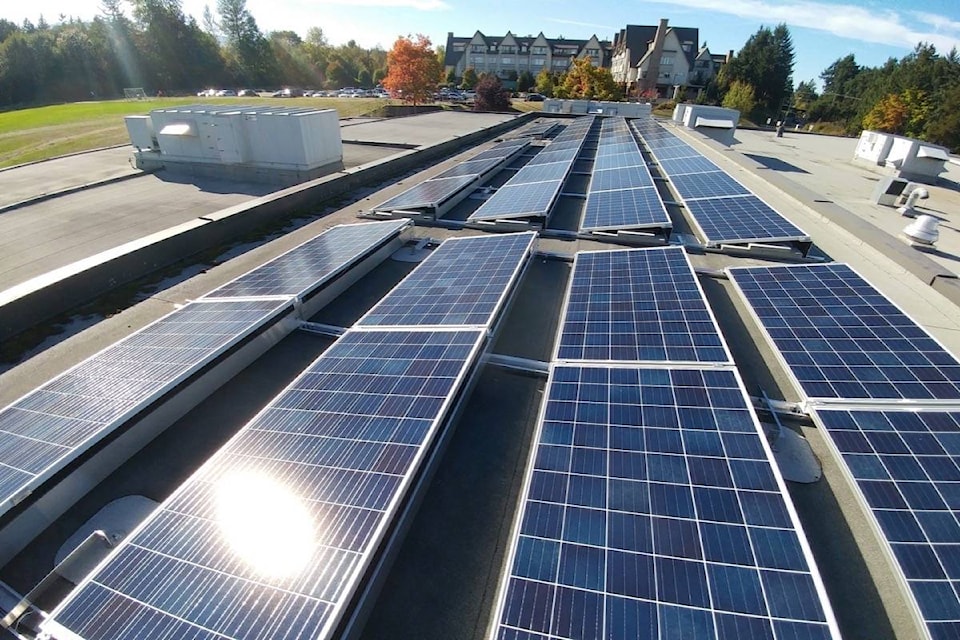While the sun might not be making too many appearances lately, that’s not stopping a new set of solar panels from collecting energy.
During its Nov. 28 regular meeting, the School District 69 (Qualicum) school board got an introduction to Kwalikum Secondary School’s solar power system, which is now up and running.
Jason Jackson of Hakai Energy Solutions, which designed and installed the system this summer, made a presentation to the board on the 120 photovoltaic panels secured to the roof of the school’s southern building.
At a cost of $145,687, the project came in 10 per cent under budget, and has six per cent more capacity than originally estimated, said Jackson.
Before those savings, the system was estimated to pay for itself in energy savings in 16 years, making an average of about $9,105 a year.
The system will produce an estimated 42,683 kilowatt hours of energy per year, said Jackson, or roughly the equivalent of the amount of energy consumed by four average Canadian homes.
The public can see daily, monthly and yearly how much energy the system has absorbed from the sun through a web page that also calculates the amount of CO2 emissions saved. As of Dec. 2, the system had collected 1,204 kilowatt hours of energy, 1,160 of which was collected in November.
The energy figures can be viewed at monitoringpublic.solaredge.com/solaredge-web/p/site/public?name=Kwalikum%20Secondary%20School&locale=en_US#/dashboard.
The power collected by the system is either used for the school’s needs, or gets sent back into the grid, offsetting the school board’s hydro bill, Jackson told trustees.
“The system is very durable and robust,” he said, adding it features various safety features, including an automatic shut-off triggered by a fire alarm.
“The system is basically completed,” said Jackson, noting a display remains to be installed in the school for staff and students to view statistics from the public web page. The display will detail the energy collected by the solar panel system.
